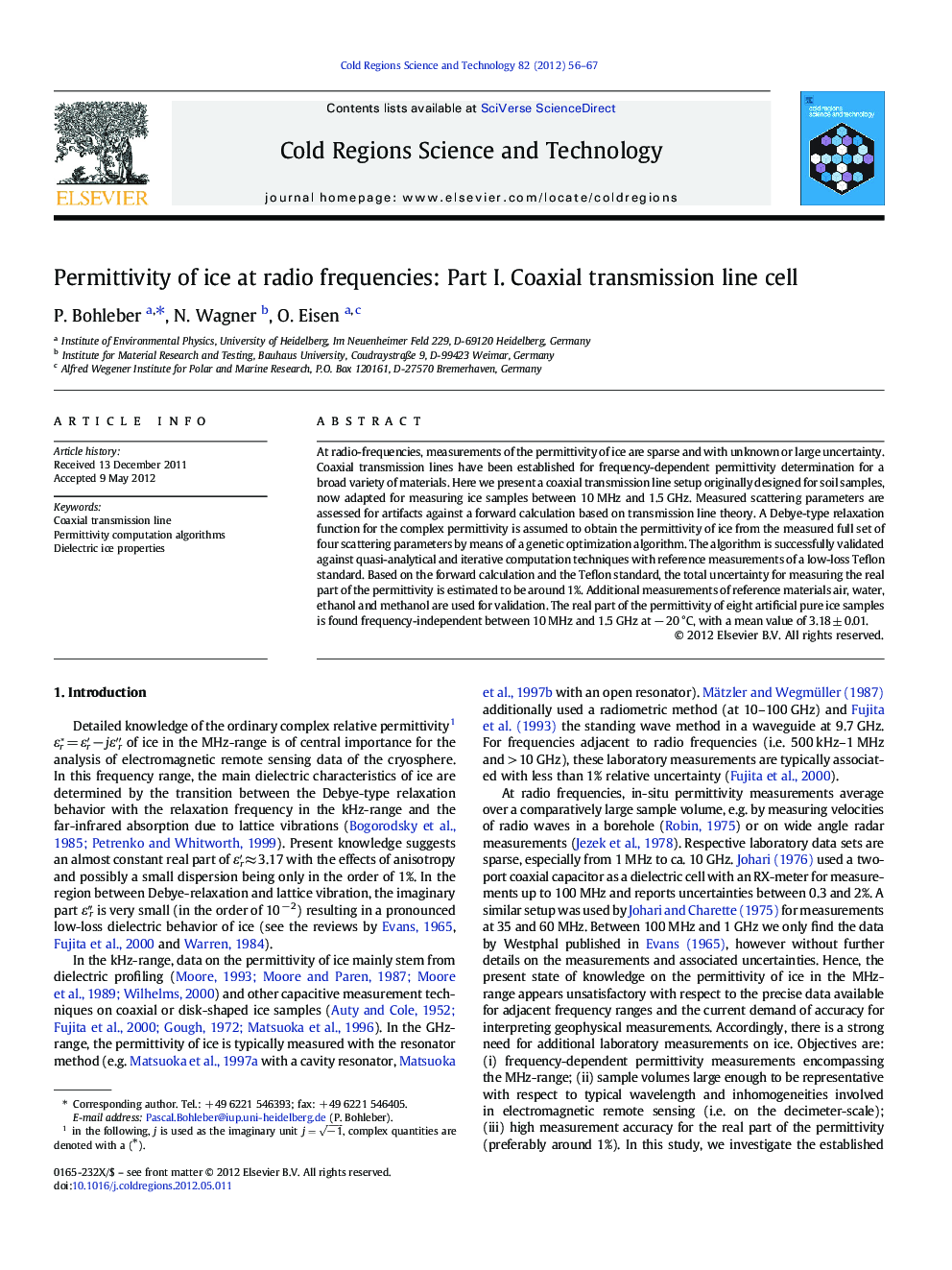| Article ID | Journal | Published Year | Pages | File Type |
|---|---|---|---|---|
| 4675952 | Cold Regions Science and Technology | 2012 | 12 Pages |
At radio-frequencies, measurements of the permittivity of ice are sparse and with unknown or large uncertainty. Coaxial transmission lines have been established for frequency-dependent permittivity determination for a broad variety of materials. Here we present a coaxial transmission line setup originally designed for soil samples, now adapted for measuring ice samples between 10 MHz and 1.5 GHz. Measured scattering parameters are assessed for artifacts against a forward calculation based on transmission line theory. A Debye-type relaxation function for the complex permittivity is assumed to obtain the permittivity of ice from the measured full set of four scattering parameters by means of a genetic optimization algorithm. The algorithm is successfully validated against quasi-analytical and iterative computation techniques with reference measurements of a low-loss Teflon standard. Based on the forward calculation and the Teflon standard, the total uncertainty for measuring the real part of the permittivity is estimated to be around 1%. Additional measurements of reference materials air, water, ethanol and methanol are used for validation. The real part of the permittivity of eight artificial pure ice samples is found frequency-independent between 10 MHz and 1.5 GHz at − 20 °C, with a mean value of 3.18 ± 0.01.
► We present a coaxial transmission line setup specifically adapted for measuring ice samples. ► A Debye-model based optimization algorithm is validated against other computational methods. ► The real part of the permittivity of Teflon is calculated to be 2.02 ± 0.02. ► The real part of the permittivity of ice is measured at 1% uncertainty between 10 MHz and 1.5 GHz.
